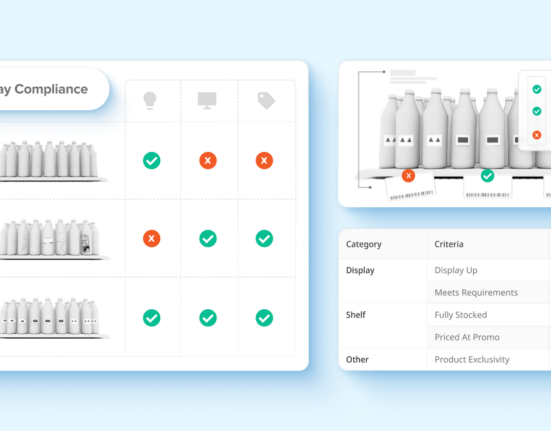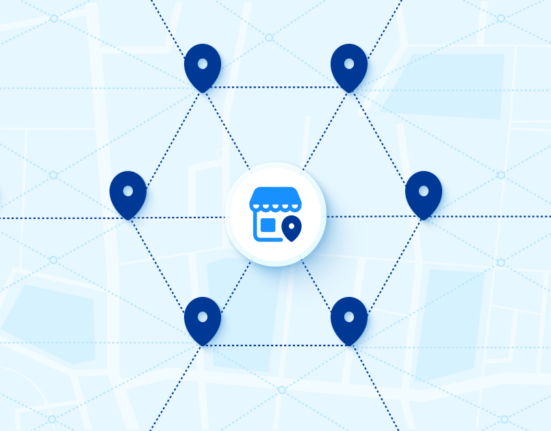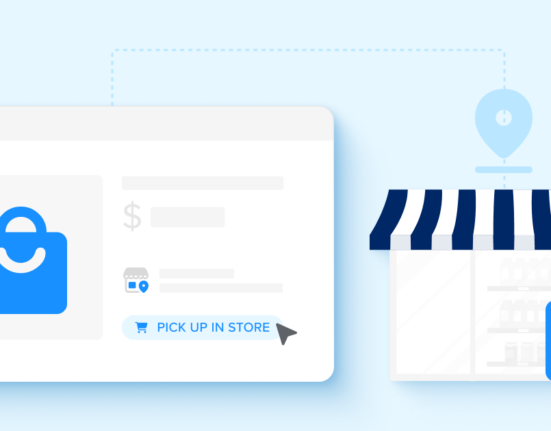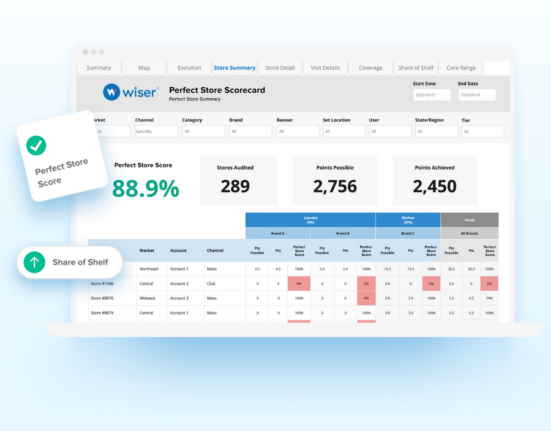Any retail business without a solid strategy is bound to fail. It’s essential that your business is able to engage shoppers, build customer loyalty, and drive sales.
But developing an effective retail strategy takes more than just attracting customer attention. Several factors need to be considered so you can get shoppers to the shelf and making purchases.
What Is Retail Strategy?
A retail strategy is the process that retailers use to promote their products or services in order to build awareness and generate sales. This can be done in many ways, including both paid and organically generated marketing advertisements.
Both online and brick-and-mortar stores use retail strategies, albeit in different ways. Regardless of how and where your business operates, an effective strategy is essential.

Why Is a Retail Strategy Important for Your Business?
Your business needs an effective retail strategy in order to stay relevant and competitive. Ideally, your strategy will be so successful that it gives your business an edge over the competition.
With the right strategies in place, there are many possible benefits for your business, including:
- Attracting new customers
- Building your brand image
- Maintaining customer loyalty
- Expanding your business
- Increasing sales
All of these and more are possible, but it all starts with creating the right strategy for your business.
The key to customer loyalty is ensuring that shoppers have a smooth and enjoyable shopping experience.
Common Retail Challenges
The retail industry is constantly changing, and businesses are often faced with new challenges as a result.
Constantly Changing Customer Expectations
Customer preferences rarely stay static for long and ensuring that you are up-to-date with trends and consumer demand can be essential to success.
Things like seasonality, the economy, social media trends, and competitor actions can all influence shopper expectations, and staying on top of all these things is crucial if you want to keep your business profitable.
Maintaining Customer Loyalty
Tools like promotions, deals, and sales are a good way to keep shoppers coming back to your business, but losing customers is just as easy.
Your business can lose favor with shoppers because of things like product quality, negatively perceived brand image, or impersonal/cold marketing.
The key to customer loyalty is ensuring that shoppers have a smooth and enjoyable shopping experience.
Employee Turnover
Retail has one of the highest employee turnover rates in the job industry, and continuously having to train and retrain new staff can leave a wide margin for error. On top of this, a lot of time and effort goes into replacing employees.
One side effect of this is decreased employee engagement, which can result in a lack of employee knowledge of company policies. This can eventually lead to negative employee-customer experiences—hurting your brand image.
Finding the Right Software
Businesses have many options available to them when it comes to retail software. However, this means that often a retailer can choose a technology that isn’t right for their business, leading to many potential problems.
Sometimes these technologies are difficult to use, difficult to integrate, or lack comprehensive access to data and insights. Finding the right software can be exactly the game-changer a business needs to improve its operation.

How to Develop a Successful Retail Strategy
To solve these challenges, it’s crucial for your business to develop a retail strategy that addresses every issue you might encounter. Here are some tips on how to do it:
No. 1: Identify Your Target Market
Look into your demographics. Who is buying your products? Are you marketing to them all?
Take a look at details like age, where they live, how much money they spend, and how they learned about your store. All this information can help you to understand your customer base and market toward them better in the future.
For example, if your business is primarily serving younger shoppers, then it’s probably better to market toward them using social media and mobile-based platforms rather than paper or commercial-based advertisements.
Every piece of information you have on your consumer base can help you to refine your marketing strategy.
No. 2: Define Your Positioning
Where does your business stand when compared to other similar retailers?
It’s important that you figure out early what your position is in the market so you can base your strategy around it. If you’re unsure where your business stands, consider gathering consumer insights about how you are being perceived by shoppers already. Why do they shop with you rather than any other business?
For example, if your company is viewed as part of a luxury market then your advertising should be very different than that of a convenience store’s.
Determining your position should be one of your first steps when developing your retail strategy.
No. 3: Personalize Consumer Shopping Experiences
Consumers want to purchase from businesses that understand them and view them as individuals, so personalized marketing can go a long way when it comes to improving customer loyalty.
Consider gathering data via customer surveys or similar methods to ensure that the information is accurate and relevant.
Having a personalized strategy can cause a domino effect of benefits for your business. A targeted customer who feels more understood will buy, develop a higher sense of loyalty, and make more purchases in the future. They may even recommend your business to others, increasing your sales further.

No. 4: Build and Maintain Employee Engagement
As discussed earlier, the retail business has one of the highest employee turnover rates. To counteract this, it’s important that you keep your employees engaged.
This can be accomplished by motivating them with fair wages and incentives, as well as making sure they are properly trained and up-to-date with all company protocols so they can accurately represent your business.
Remember not to take for granted any customer-employee interaction. One incidental phone call, email, or greeting can be what either drives a customer away or creates a loyal shopper for life.
Any business that neglects its employees is bound to eventually fail but committing to good employee engagement can improve your customer relationships and increase sales.
No. 5: Leverage Customer Engagement
Almost all businesses have somewhat of a social media presence. But simply having it isn’t enough—you must also use it to your advantage.
Invest in things like social media advertisements, online forums, engaging with customers online, and responding to reviews or negative comments. All of these can create a stronger brand presence with your consumer base and increase brand perception and loyalty.
Social media and internet culture in general is an extremely large presence in many people’s lives and neglecting to target your customers on these platforms can lose your business countless profits.
Getting your retail strategy right can take a lot of time and effort but can also be the difference between your business thriving or having to close up shop.
Not all strategies will work for your business, so it’s important to experiment and try out different tactics. Regardless of what you end up with, an effective retail strategy is crucial to the success of your company.














